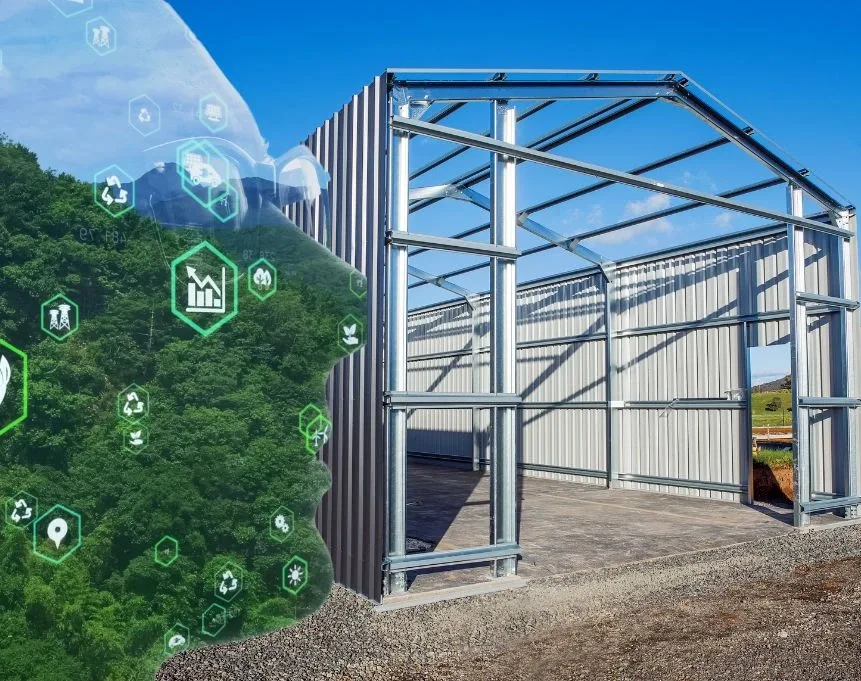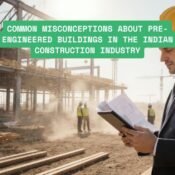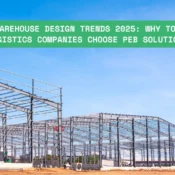
How Pre-Engineered Buildings Help Achieve Sustainable Development Goals
The Real Challenge: Considering Growth, Expenditure, and Sustainability
India’s one of the top companies had set up ambitious goals for its production units to cater to the growing demand for their products. Everything was set – a site had been set aside, approvals needed were secured, and a conventional factory was planned. But soon, problems started piling up:
❌ Material pricing issues pushed budget limits.
❌ Labor shortages caused project timelines to stagnate.
❌ Increased environmental regulations forced a reassessment of their business sustainability.
The project came to a halt. There was no doubting that widening operational scope would help business, but at this point, the challenges related to basic cost, time constraints, budget cuts, and eco-friendliness compliance were refusing to be dealt with.
This scenario isn’t a one-off case. Countless industries across India and the globe are facing issues with:
✔ Affordable infrastructure facilities
✔ Efficient time construction
✔ Eco-friendliness and legal obligations
So, what could fix these problems? Pre-Engineered Buildings (PEBs).

Why PEBs? Faster, Cheaper, and Greener Solutions
PEBs allow for faster, cheaper, and greener design than what conventional methods provide. These structures, which are made of steel and constructed away from the site of assembly, are changing the industrial infrastructure approach globally.
Aside from optimizing performance, PEBs also fulfill the United Nations’ Sustainable Development Goals (SDGs). Let’s explore how PEBs drive innovation and sustainability for businesses.
1. Decrease in Carbon Footprint and Energy Usage (SDG 7 & SDG 13)
🔹 The Issue: Construction Industry’s High Carbon Emission
The construction sector is responsible for a staggering 40% of CO₂ emissions globally. Traditional concrete buildings rely upon cement, bricks, and sand, which further exacerbate the problem.
🔹 The Advantages of PEBs:
✅ Emission Reduction – Due to optimized materials and reduced on-site activities, PEBs emit 30-40% lesser greenhouse gases.
✅ Reduction in Energy Consumption – PEB structures have insulating panels, solar roofing, and skylights that save up to 30% energy.
✅ Reusable Materials – Steel, the main component of PEBs, is 100% recyclable, unlike concrete.
✅ Limited Waste Generation – Prefabricated components ensure 60% less waste vs. conventional buildings.
📉 Results: PEBs help businesses cut operational costs, achieve carbon neutrality, and reduce ecological footprints.
2. Cost Efficiency & Adaptability for Industrial Infrastructure (SDG 9 & SDG 11)
🔹 The Challenge: Time and Cost Implications in Project Infrastructure
Industrial projects face heavy costs and delays due to:
- Volatile cement and brick prices.
- Labor shortages causing delays.
- High maintenance costs of conventional structures.
🔹 How PEBs Help:
✅ Reduced Construction Time: PEBs take half the time due to factory-made components.
✅ Lower Costs: Less material, labor, and site preparation make PEBs cheaper.
✅ Seamless Expansion: Modular designs allow easy expansion of warehouses or factories.
✅ Multipurpose Use: Ideal for industrial sheds, prefabricated warehouses, and logistics centers.
📈 Impact: PEBs enable cost-effective scaling of operations in India.

3. Sustainable Industrialization & Resource Efficiency (SDG 12 & SDG 8)
🔹 The Challenge: 1.3 Billion Tons of Annual Construction Waste
🔹 How PEBs Help:
✅ Optimized Material Use: Precision engineering minimizes waste.
✅ 50+ Year Lifespan: Durable with low maintenance.
✅ Reusability: Easily dismantled, relocated, or repurposed.
✅ Healthier Work Environments: Natural ventilation and daylight.
🌍 Impact: PEBs reduce waste and promote eco-friendly industrialization.
4. Climate-Resilient & Disaster-Ready Infrastructure (SDG 13 & SDG 15)
🔹 The Challenge: Rising Climate Risks
Threats like earthquakes, floods, and heatwaves demand resilient infrastructure.
🔹 How PEBs Help:
✅ Earthquake-Resistant Design: Seismic shock-absorbing technology.
✅ Weatherproof Coatings: Resist humidity, rust, and extreme heat.
✅ Cool Roof Technology: Reduces cooling costs by 25%.
📌 Impact: PEBs ensure climate-resilient operations in India.
5. Economic Growth & Workforce Development (SDG 8 & SDG 4)
🔷 Skill Gaps in Construction
Challenges include:
❌ Shortage of skilled labor.
❌ Unsafe working conditions.
❌ Slow automation adoption.
🔷 How PEBs Help:
✅ Job Creation: Demand for skilled engineers and assemblers.
✅ Safer Worksites: Reduced manual labor risks.
✅ Advanced Skills: Training in AI and digital tools.
👷 Outcome: PEBs boost employment, safety, and skills in India.

"At Metal Tree, we believe that sustainable growth begins with smart infrastructure. Pre-Engineered Buildings (PEBs) are not just about faster construction—they are about building a greener, more resilient future. By aligning with the United Nations' Sustainable Development Goals (SDGs), we are committed to delivering energy-efficient, cost-effective, and eco-friendly industrial solutions that drive innovation while protecting our planet."
The Growth of Sustainable Industrialization with PEBs
Indian industries seeking rapid, cost-efficient, and sustainable growth can no longer rely on conventional methods. PEBs deliver:
✅ Lower costs and environmental impact.
✅ Scalability and eco-friendliness.
✅ Climate resilience and SDG compliance.
Why Choose Metal Tree for PEB Requirements?
Metal Tree eco-friendly PEBs for:
✔ Industrial sheds
✔ Prefabricated warehouses
✔ Factory buildings
✔ Logistics centers
🚀 Interested in Future-Ready Infrastructure?
Contact Metal Tree today!
2 thoughts on “How Pre-Engineered Buildings Help Achieve Sustainable Development Goals”
Add a Comment Cancel reply
All Categories
Recent Posts
How Much Does a Pre-Engineered Building Cost in India? Ultimate Price Guide
Tags
Call Us at
+91 9311624628






[…] Pre-Engineered Buildings (PEBs) offer a revolutionary solution by enhancing space efficiency, reducing construction times, and providing scalable storage options that are not bound by the limits of conventional buildings. […]
[…] are transforming construction workflows, the core PEB benefits driving their adoption, and the steel building advantages that make them ideal for modern infrastructure […]